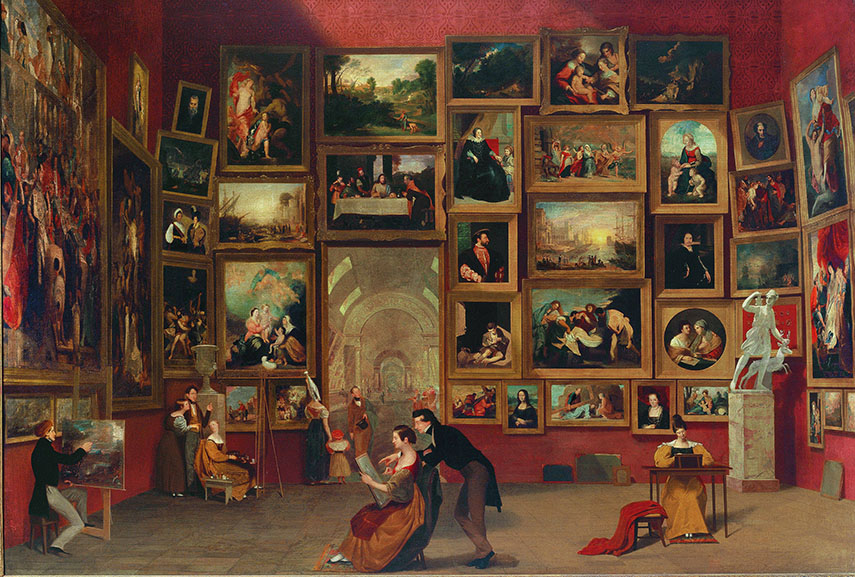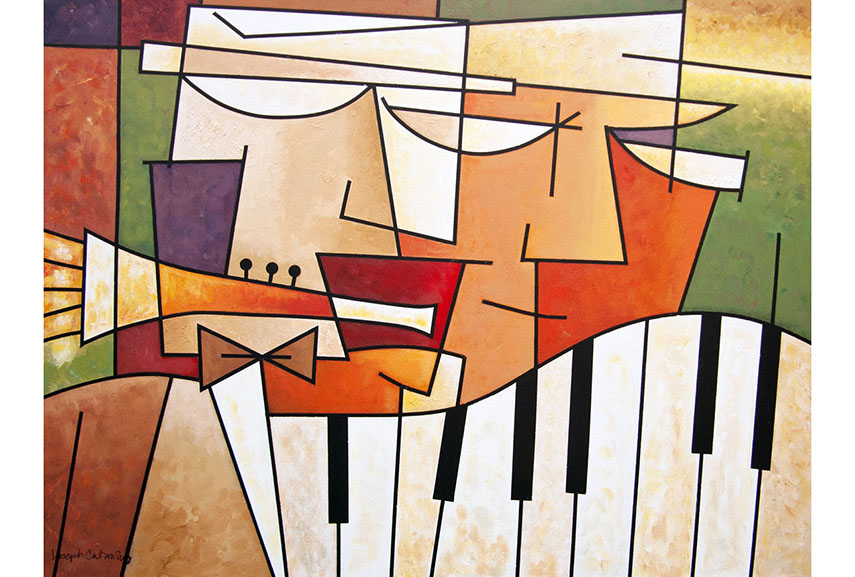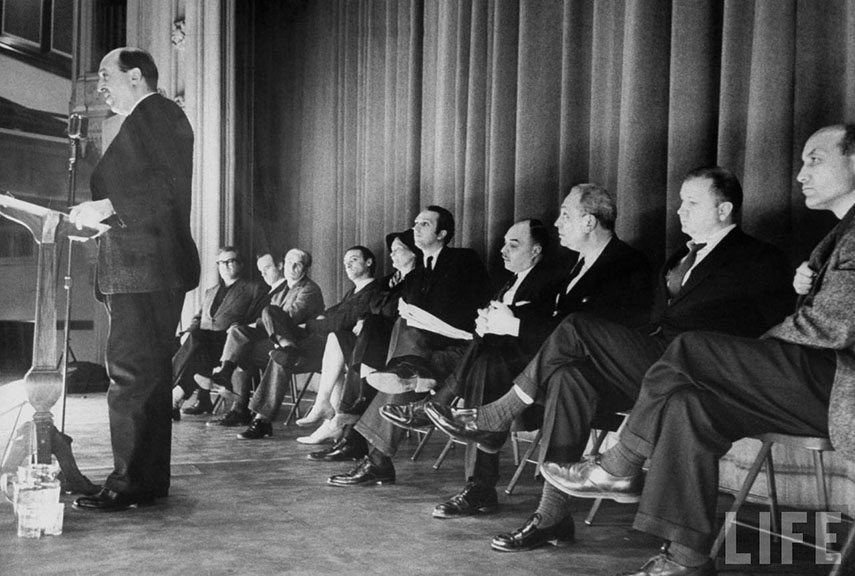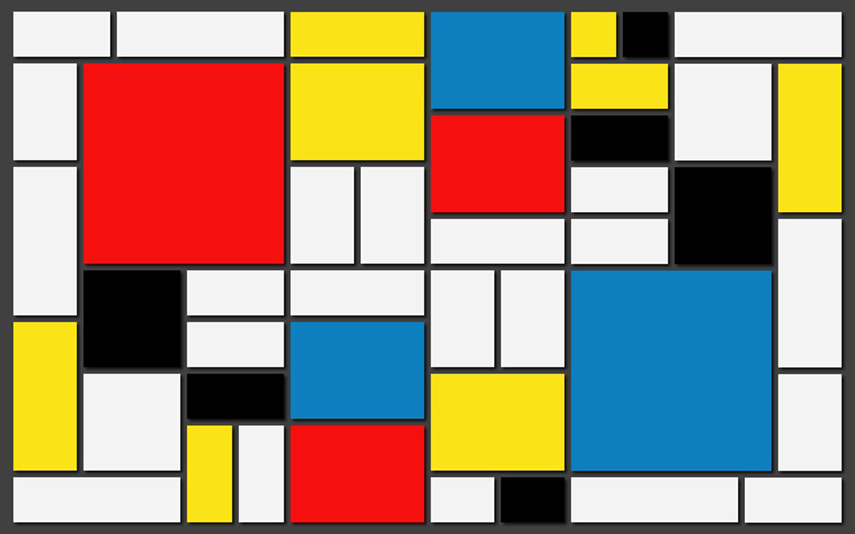What Is the Problem With Modernism and Only Focusing on Formal Qualities in Art?
How do we gauge the value of the work of fine art? And, no, we are not talking about its price on the market place. Ane of the oldest answers to that question is that we judge information technology by its class, by those structural elements that are always discernible to the centre - that which we call formalism in art. This approach to deciphering artwork gave nativity to fine art scientific discipline, fine art criticism, every bit well every bit a specific way of creating fine art by focusing on its visual, aesthetic quality.
The route to understanding what formalism in art actually is about takes us from philosophical ideas of Plato, Aristotle and Immanuel Kant, through the experiments of the avant-garde, all the way to contemporary platonic of socially-engaged and conceptual art.
At the same time, at its heart, formalism holds that ane question which stands above all others - what is art? How tin can we know when we are standing in the presence of something truly magnificent? Is there a universal way to determine the quality of any unmarried work and utilise it to recreate the sublime?
Many believed that at that place is. They postulated that creative excellence tin be found in the structure of its elements, that it can be dissected and measured, similar with all good science, only more than importantly, that it unveils the very essence of human creativity.

Fifty'art pour fifty'art - What is Formalism in Art?
So, what are those compositional elements formalism places at the front? Or, better even so, what is not formalism? Every fourth dimension you lot stopped to capeesh the ultimate irony of Gustav Klimt's Decease and Life (1908-16) or profound social commentary of Banksy's Rage Flower Thrower (2003), co-ordinate to formalism doctrine you are missing the point. Everything in the work of art which is related to symbolism, context of whatever kind and iconography can just be secondary to what constitutes its course - line, shape, color, brushwork. Why is this and then of import? First, these are the elements that all artwork ultimately share, and and so the only elements which tin can provide a basis for agreement art in general. And secondly, putting these elements in focus means that art can become an autonomous sphere of human being creation - L'art pour l'art.
"L'fine art pour l'fine art without purpose, for all purpose perverts art." - Benjamin Abiding, 1804
50'art pour 50'artis peradventure one of the most famous lines in all of art history and it is closely related to formalist movement. Meaning art for art'due south sake, it was an idea that went perfectly in manus with formalist view of value of art. Art needs no purpose other than its intrinsic beauty. If value of art can only be found in its structural elements, then surly zip outside those elements can present motive for creating art. These ideas of course at the center of artistic cosmos had different manifestations in unlike art movements. For Romantics, form was where you search for art'southward essence; For Symbolists and Impressionists, information technology was its superior power to convey creative person intention; For Abstract Expressionists, it was the raison d'être - for meaning in art, one should look no further than the form.
The Definition of Formalism in Fine art
History of Ceremonial - The Question of Aesthetics
Plato was the first thinker to innovate the concept of grade. For him, grade or appearance, was that 1 element shared by both tangible and abstract phenomena in the earth. His ideas framed how nosotros understand homo perception, why is a portrait or a shadow equally important to us as the real thing. Plato'southward theories were the ground for birthing the aesthetic subject - the study of beautiful. Aristotle believed that catharsis in art tin can merely be accomplished if the work is dominated by its structure. Immanuel Kant, on the other hand, was more than concerned with universality. His philosophical quests for universal truth lead him to conclude that simply form of an fine art object can be judged equally past different people, as leading to pleasure. For what kind of world it is we live in, if nosotros all see things differently, if in that location'southward no objective cognition? From Kant we inherited that thought of form equally shape, which volition later lead to analysis of what today we call style. It was through reading of Kant that aesthetics of art, and fine art criticism with it, was gradually formulated by Eduard Hanslick (1891), Clive Bell (1913) and Roger Fry (1920).
Every bit an idea, formalism reached its summit in the period of loftier modernism, between the last decades of the 19th and first one-half of the 20th century. This is not surprising if we remember that get-go works of abstract art appeared during this flow. Not-representational art brought this new way of expression where often cypher is discernible except its structure, inspired greatly by evolution of aesthetic thinking on the expressiveness of class. Works of Piet Mondrian and Jackson Pollock, together with their thinking about art, pushed an American art critic Clement Greenberg (1960) to fortify this formal approach for analyzing modern art only through those elements used to create it.

Philosophy of Formalism - Form in Literature and Music
A large part of philosophy of formalism is related to 19th century striving for scientific truth. People then believed that in art, like in physics or architecture, we need to learn to recognize formalistic aspects of the work in club to study art every bit a scientific discipline. Such discipline would written report how art is made in order to sympathize what it is nosotros are looking at. Formalism is the reason why today nosotros can enroll into Literary Theory, Musicology and Art History programs and courses at universities. It is the reason why there are yet people effectually who are trained to trace back every brushstroke of Mona Lisa. This philosophy, governed by 19th century logical thinking, enabled u.s.a. to empathise the syntax in a literary masterpiece, succession of chords in an orchestral symphony, every breath in actor's functioning. Ceremonial brought discourse of color, texture, rhythm, composition and flow into the world, concepts we all employ when nosotros try to draw the cute.
Ceremonial was an attempt on philosophical enquiry into the very nature of art, and every bit such was one approach amongst many others, like Voluntarism, Intellectualism and Naturalism. But, information technology took all of the arts with a storm. Ceremonial was particularly strong in music. It positioned music itself as above history, composers and even text which is ofttimes nowadays in vocal works. It was much easier to celebrate the brainchild in music than information technology was with the other arts, merely also to diminish the value of anything exterior the piece of work itself. In literature, formalism meant focusing on exploring the meaning of a literary work only from what we can experience while reading it, and and then only because those elements inherent in the text - grammar, syntax, tropes etc...

The Art Critics: Clive Bong and Cloudless Greenberg
One of the most important figures in formalism was Bloomsbury writer and art criticClive Bell. His 1914 book Art was showtime attempt to ascertain the form in visual art which he did through his notion of significant class. Reflecting the 50'fine art pour 50'artcredo, his goal was to give irrefutable proof that art form is different than what nosotros find in all other objects. Bong believed that emotions we feel when looking at an artwork are incited by its formal quality and not its bailiwick matter, sensation he called the aesthetic emotion. Significant form is actually a combination of formal elements, primarily lines and colors which Clive Bell idea are edifice blocks of all visual art.
Post-obit Bell's influential ideas, it was American critic Clement Greenberg who proved to be the strongest advocate of ceremonial and modern art inspired with it. Information technology not for his striving to codify the expressive elements in non-representational art, it is questionable whether works of Pablo Picasso, Clyfford Notwithstanding, Mark Rothko and other Abstract Expressionist artists would exist so quickly accepted in the U.Due south. art community. For Greenberg, the rejection of representation by abstruse artists was a natural development of visual art. The manipulation of course was the rex of creative expression.

The Formal Analysis of a Painting - What Constitutes the Form
As pertaining to the meaning of the word "formalism", the formal assay of the work of fine art refers to clarification of purely visual elements. The Formal analysis role is to locate all the elements of art'due south form and explain their organization - the work'due south limerick. So, what are those elements? Explanations which tin can be found differ in number, but all agree on the most of import: line , color , shape, space and texture .
When we endeavour to describe the line, we ask ourselves is it straight, curved, flowing, and thick or thin, horizontal or vertical. Shape and space stand for the human relationship of objects in the painting and space behind them. The main question is whether the shape is geometric or organic, how many shapes are used to produce the desired prototype? In what dimension, course of space, are they placed? Color is, too the line, the most important element of a painting. We depict the color through concepts of hue (red, blue, yellow etc.), value (brightness), intensity (purity), saturation, delineating between main and secondary colors and because their complementarities. Texture is that concluding slice of the puzzle which gives the states the idea of surface quality of an object. Is it silk the man on the portrait is wearing? What would the object feel like if we could touch information technology? In order to make a successful assay we must ask that near important question - What is the composition of the painting? It is the collective trip the light fantastic of all of these elements that constitutes the significant form, that which provides its expressiveness.

Formalist Art - Creating the Accented
The works of art that we could dub equally formalist already achieved fame by other names - modern fine art, abstract fine art, the avant-garde, yet they hither are presented in the context of their philosophical origin. After all, Clement Greenberg's famous essay Modernist Painting (1960) uses works of Jackson Pollock every bit The case of formalism. Greenberg saw Pollock'southward style as perhaps the greatest example of that manipulation of pure form. Simply peradventure, the best example of formalist art would be compositions of Piet Mondrian like his Composition with Yellow, Blue, and Red (1937-42). Working with uncomplicated geometrical lines and chief colors, his paintings are the purest manifestation of that which Clive Bell considered significant form. Formalist approach to music, which produced the concept of absolute art, every bit unattached to anything outside itself, was a great inspiration for abstract artists who strived to achieve this lack of referentiality.
Fifty-fifty though ceremonial stared in many other arts, information technology was the painting that both Bell and Greenberg had in mind while formulating their theories. Great works of formalist art were produced by Expressionism, Cubism, Geometrical Abstruse Art, Postal service-Painterly Abstraction, and Informal Art by artists like Wassily Kandinsky, Kasimir Malewitsch, Hans Hofmann, Robert Motherwell, Jean Dubuffet and many others. But this purified painterly arroyo to class also inspired artists in other media and continues to do so today: Hans Richter and Viking Eggeling and their Abstract films, Minimalism of Yves Klein and Frank Stella, Vsevolod Yemilyevich Meyerhold's Formalist theatre, Country art etc.

Welcome to the Age of Postal service-formalism
Like with all good social theories, there is unremarkably more than criticism involved, than the actual content discussing the theory. Anti-formalism opinions appeared almost instantly after first attempts of canonization. Questions enervating more detailed description of the form, disputes over the historical function of fine art and what constitutes its value continue to inflame fine art critics and historians. But the biggest challenge to ceremonial came with Postmodernism and Conceptual fine art. Works of artists similar Marcel Duchamp and Andy Warhol brought the question of concept in play when nobody could've guessed that it would come up to rule contemporary art. Postmodernism on the other mitt introduced that hard disquisitional reflection into the inner workings of the art globe, fierce downwardly all big narratives and search for universal truth. But in 2017, nosotros live in a truly Mail service world, where Postmodernism is besides something we had to overcome, leading us to a whole new appreciation of the form.
Written by Vera Mevorah .
References:
All images used for illustrative purposes only.
Source: https://www.widewalls.ch/magazine/formalism-in-art
0 Response to "What Is the Problem With Modernism and Only Focusing on Formal Qualities in Art?"
Post a Comment